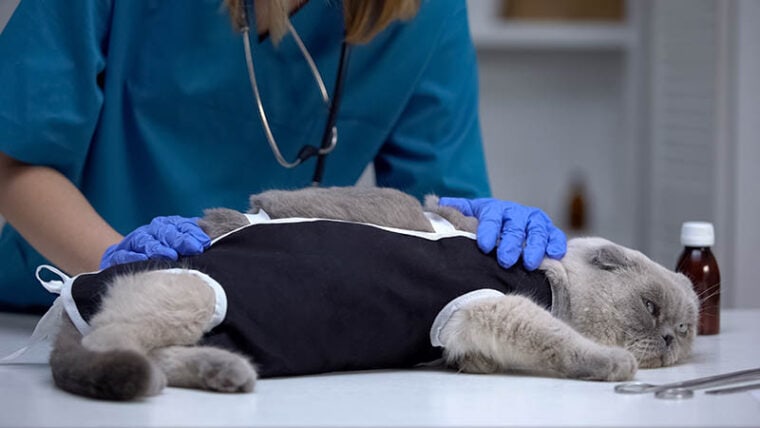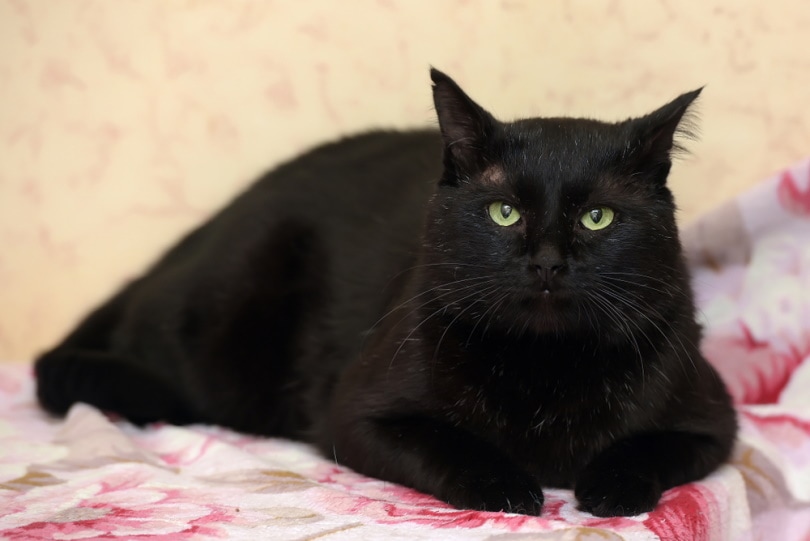
Click to Skip Ahead
If you are preparing your cat to be spayed or neutered, it is understandable that you would want to know about all the potential effects of said procedures. You may have heard that cats gain weight after the surgery. But is this really true?
It is common for cats to weight gain after being spayed, but it will not happen to all cats. Considering this, it is easy to think that spaying your cat is not worth the hassle. Obesity is dangerous, after all. However, castrating your cat is generally part of being a responsible cat owner.
If you want to learn more about why cats gain weight after being spayed and what you can do to help manage their weight, this article has you covered.
Why Do Cats Gain Weight After Being Spayed?
So, why does spaying affect weight gain? According to a study, spaying a cat often leads to increased eating1. The extra feeding correlates directly to an increase in weight.
Another study found that spaying a cat influenced her metabolic rate and glucose tolerance, which could significantly impact weight gain2.
While cats may gain weight after being spayed, it is not guaranteed, especially if owners closely monitor their dietary intake.

Is it Important to Spay Cats?
Some may learn about the link between castration and obesity and decide that they should not spay their cat. However, spaying is generally recommended for managing your cat’s behavior and health.
Sterilizing your cat will make her less apt to wander. Reproductively ntact cats roam searching for a mate, whereas castrated ones are typically content to remain home. Intact cats are also more likely to get into fights, so if you have multiple pets in your home, this could be a significant issue for you.
In terms of health, your cat will benefit from being spayed. Castrated cats typically live 3 to 5 years longer than their intact counterparts. Their risk for developing certain cancers is low, such as cancer of the mammary glands, the uterus, and the ovaries. Plus, spaying your cat will prevent her from experiencing heat or becoming pregnant, sparing her from possible pyometra (uterine infection) or dystocia.
Not to mention, castrating cats is a crucial part of managing pet overpopulation. When intact cats breed and birth a litter of cats, the offspring are often without a home. They contribute to the already staggering population of unwanted animals, which promotes the spread of feline infectious disease.

Why Obesity Is Dangerous in Cats
The link between sterilization and obesity should be in your mind after spaying your cat. Obesity is a dangerous condition that comes with many health complications. A damaged immune system, heart disease, metabolic disorders, and arthritis are just a few issues that can arise due to obesity.
Some signs that your cat may be overweight include difficulty jumping, lethargy, an unclear waistline, and poor grooming. In addition to causing several health issues, obesity can also shorten your cat’s lifespan and health span.
How To Help Your Cat Manage Her Weight
Helping your cat lose weight is a slow process that requires patience. Thankfully, there are some tips and tricks that can help move the process along.
Moving your cat’s food bowl to a new location is an excellent way to help your cat work for her food. If you have stairs in your house, consider moving the bowl up or down the stairs so that your cat is required to climb to get their food. This little workout can help them to burn off some weight between meals.
Removing their food from the places they like to hang around is also important. Overweight cats may laze around their food bowl to avoid moving, so changing the bowl’s location will encourage your cat to move.
Interactive feeding toys could also be a good way to help your cat lose weight. These toys guarantee that your cat will have to work for her meals, giving her exercise and a limited diet. Speaking of toys, playing with your cat is a great way to encourage exercise. Invest in some new toys and help your cat to stay active.
It also is worthwhile to consult with your vet to discuss how many calories your cat should be eating on a daily basis based on energy requirements for an ideal weight – and which diet is appropriate based on carbohydrate, protein, and fat content. Depending on the lifestage when your cat is spayed, a change from kitten to adult cat food may be required.
Learn how to control your cat’s diet by using our calculator tool here:
The exact amount of calories an individual animal needs to maintain a healthy weight is variable and influenced by many factors including genetics, age, breed, and activity level. This tool is meant to be used only as a guideline for healthy individuals and does not substitute veterinary advice
Conclusion
It is easy for cats to slip into obesity, and being vigilant is essential. Monitoring their diet and activity is the best way to ensure your cat maintains a healthy weight. Although spaying can lead to increased weight, sterilizing your cat should not be avoided. Maintaining your cat’s weight and having her spayed are vital parts of her health and should not be disregarded.
Featured Image Credit: Motortion Films, Shutterstock








